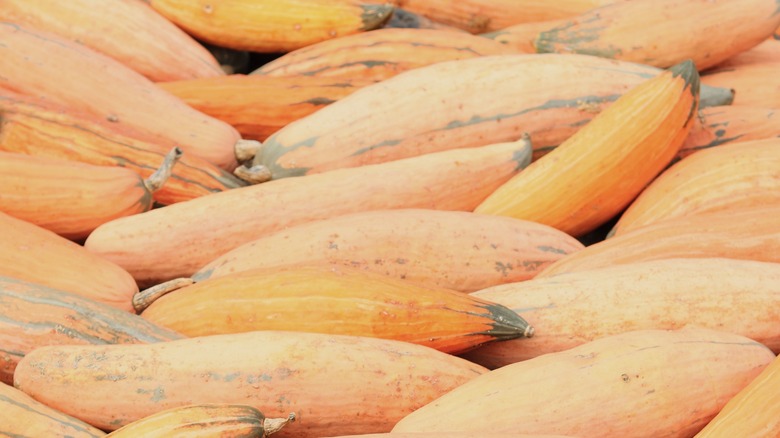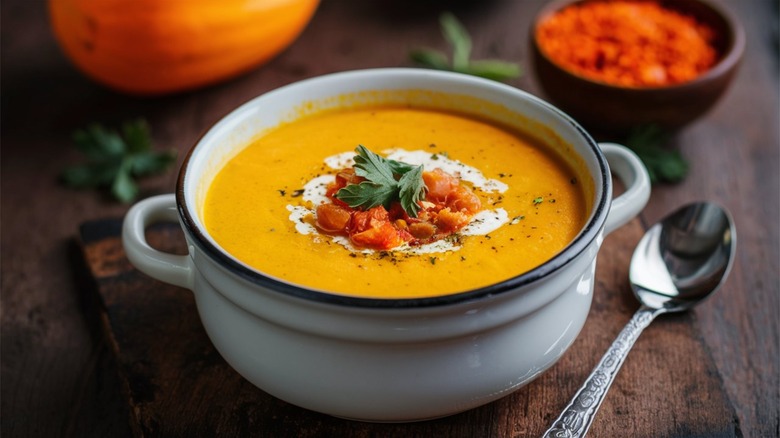Candy Roaster Squash Is North Georgia's Historic Sweet Gourd
This giant squash looks intimidating at first but is a total sweetheart. Unlike most squash — which get mushy and bitter if cooked incorrectly or kept for too long — the candy roaster squash is smooth and creamy with a sweet, nutty flavor. Its taste only becomes sweeter with time, making it a popular choice for pie filling.
The squash hails from northern Georgia as well as parts of North Carolina and Tennessee. For quite some time, the candy roaster squash was somewhat of a guarded secret. It was popular within the Cherokee Nation but it did not see use in kitchens across America until 1925.
Today, anyone can grow and enjoy the candy roaster squash. Its roots are still close to the Appalachian area, both literally and figuratively. The squash is known to pop up at farmers markets, and its seeds can even be ordered online. Although it is not nearly as popular in storefronts as other squashes, the North Georgia candy roaster squash is one of many delicious Native American foods that are well worth trying.
The Cherokee Nation origins of candy roaster squash
Not only was the Cherokee Nation fond of the North Georgia candy roaster squash, but they were actually the group who bred it in the first place. The North Georgia variant is one of several candy roaster squashes that the Cherokee Nation cultivated over time. To this very day, the Cherokee Nation still guards the North Georgia candy roaster squash seeds, storing them in a seed bank to prevent extinction.
Interest in the squash outside of the Cherokee Nation spread when the Charlotte Observer published an article featuring the squash. The seeds became available for sale, although they were originally only available for purchase for those who applied via the Chamber of Commerce. Eventually, this led to people trying the squash out for themselves at home and farmers becoming familiar with the then-unknown gourd.
The squash was originally valued by the Cherokee Nation for its shelf life, and it's still valued for that same reason to this day. Its warm, nutty taste makes it a great choice in many squash recipes. It also tastes great with corn and beans in a combination known in Native American culture as the Three Sisters.

